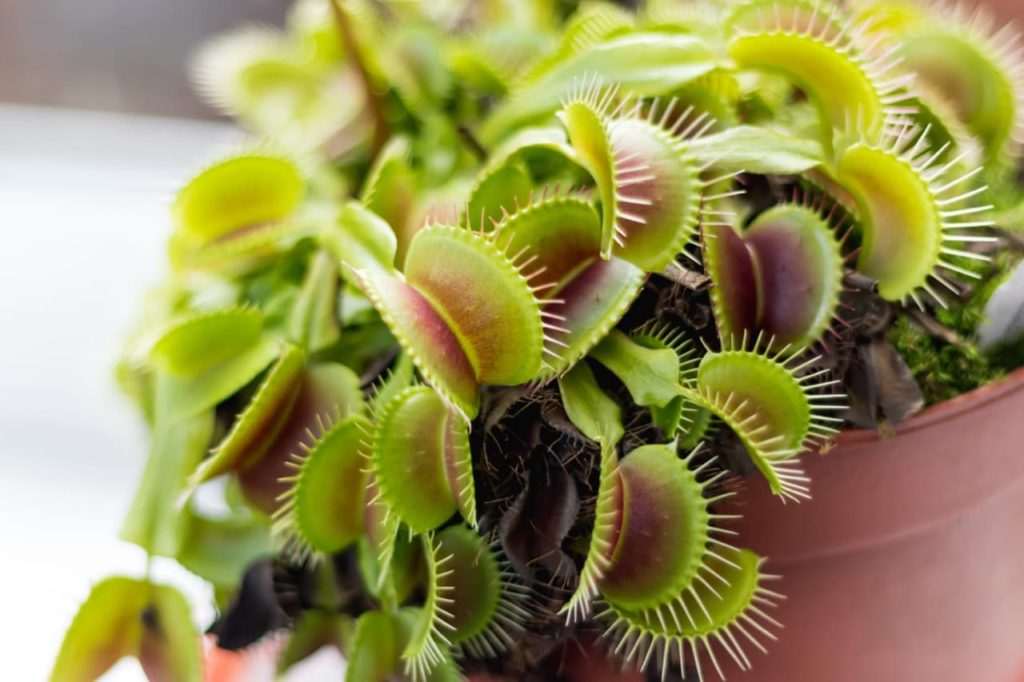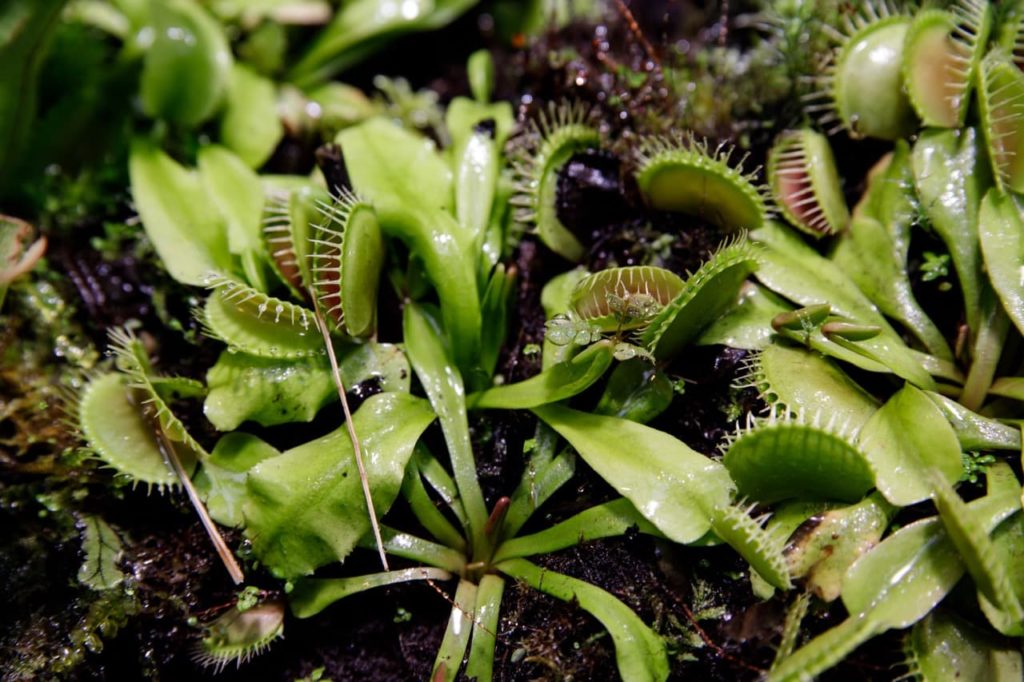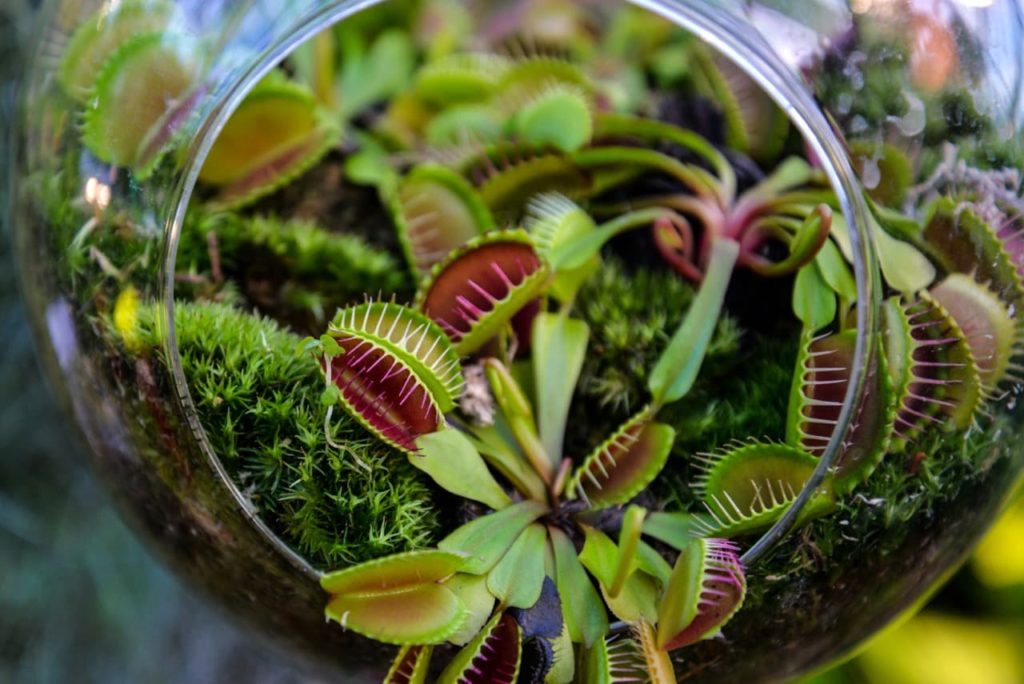CARNIVOROUS > DIONAEA > WATERING
IN THIS templet
genus Dionaea GUIDES

FeedingWatering
That alien and reasonably creepy insect - eating plant that exhibits a gape mouth and what seem to be sharp teeth is aboriginal to none other than the US .
Lest we lead on you , that yawn mouth is nothing more than a leaf that is hinged along the midvein , whilst those diabolical tooth are just interlocking prickle .

However , try out differentiate that to the flies that meet their ends inside this plant ’s foliage !
The hinged , toothed leaf plus the bait of nectar inside it flux to make the hole .
This nominally carnivorous plant survives in the natural state in only a shaving of coastal land in North and South Carolina.1Dionaea muscipula . ( n.d . ) . U.S. Fish & Wildlife Service . think April 20 , 2023 , fromhttps://www.fws.gov/species/venus-fly-trap-dionaea-muscipula

In this guide , we explain how to water these flora when grow them inside your home in a mass or other container .
notice that we ’ve cooperate especially withNigel Hewitt - Cooper , the Owner of Hewitt - Cooper Carnivorous Plants and ten - clock time RHS Gold Medalist .
Controlling Humidity
The prime habitat ofDionaea muscipula , to call it by its botanic name , is dampish , fogyish , pine savannah which is sometimes boggy or marshy .
As you may infer , it is a moisture and humidness - have it away plant .
These works , which are sturdy to only H3 , are normally keep as houseplant in the UK .

The melodic line in most interiors is insufficiently humid for Venus wing traps and they may suffer as a resultant role of the dry atmosphere .
So if you have a humidifier go in the elbow room where you may keep your Venus fly traps , this is more than ideal .
Otherwise , be sure to fine - mist them every two or three days to keep them in tip - top fly - trap shape .

Indeed , even if these works are keep outside during balmy weather , if you distrust that the atmospheric state is on the dry side , lightly mist the plants .
It will not hurt and can only help oneself .
If you mist , do so before twelve noon , sooner in the mid - morning .

Container & Soil Requirements
Before we get to the nitty - gritty of water Venus vanish trap , it is important to look into the type of containers and soil you ’re grow them in because , if the container or the soil is of the wrong kind , water correctly will be of little value .
The most desirable character of pot is a rotary , squat , shallow type with multiple drainage holes .
Pots made of natural Lucy Stone are honorable for these sore plants .

Venus fly traps thrive in soil that is damp and acidic but piteous in nutrient for the obvious reason that these plants entice and grab their own intellectual nourishment .
With this in intellect , do not use potting dirt or ericaceous compost for the growing spiritualist or any character of too - rich , fertile grime .
Procure a special potting mix for carnivorous plants made by a reputable manufacturer or make your own .
The Type Of Water To Use
The first rule of lacrimation is that these plants require pure water : neveruse tap body of water .
Venus fly trap react poorly to the chemical notice in tap water .
“ The mineral content of wiretap water supply is high enough to cause root burn , similarly to how too much chemical substance fertilizer can damage the roots of garden plants , ” aver Kevin Zhang from the Mid - Atlantic Carnivorous Plant Society .
“ If you’re able to give a carnivorous plant mineral - destitute urine , that ’s 90 % of the way of life to succeeder . ”
“ Use a water butt tie in to a down pipe to store rainwater , ” sound out Colin Skelly , a Master Horticulturist .
“ Even a small water rear will provide enough rain water for all your houseplant pauperism . ”
The best choice is rainwater , but if that is not available , you’re able to use distilled water .
“ Keep wet with rainwater , as hard urine , which feed from the taps of the legal age in the UK , is vicious to carnivorous plants , ” shares Nigel Hewitt - Cooper , the possessor of Hewitt - Cooper Carnivorous Plants .
“ Unless your water is lenient , with a Parts per million ( ppm ) of under 50 , rainwater must be used . ”
If you wish , you may always slightly acidify pH - neutral distilled pee with a little hydrogen hydrogen peroxide solution .
Watering Methods
The aim , except during the winter months , is to keep the medium in a continuously moist province by not letting it dry out completely .
There are two ways to accomplish this .
The first way is by even watering .
apply a pocket-size watering can that is fitted with a rose so that the soil is not disturbed , peculiarly as you will be watering frequently .
It is better to water in lower volume but to do so often than to water deeply with prolonged gaps .
How much and how often you body of water depends on the Dominicus - nuance intermixture the container is placed in and the weather condition .
In general , making the dirt moist once every two or three days is a good plan .
However , if your container is sited in full sun and you are have a magical spell of red-hot , juiceless weather , you should be watering daily .
subjugate both the intensity and oftenness during wintertime but be sure to keep watering , as this is an evergreen works and needs piddle year - round .
The second method is to place the pot in a tray of water with the water level coming up to about one - third of the way up the hatful .
This panache of bottom moisturesomewhat replicate the boggy , marshy condition of these plants ’ native habitat .
The bay window must have multiple drainage jam or even side slits for this method to puzzle out .
Keep an oculus on the water level of the tray and replenish it as needed and do not countenance it to fall lower than a dyad of centimetres .
We propose a ‘ best - of - both - world ’ exercise .
Water the plants with a lachrymation can ( as outlined above ) for ten day and then place the mass in a tray for ten Clarence Day , alternate between the two styles .
This type of alternation will mimic the Venus fly trap ’s aboriginal habitat ’s conditions even better and will suit this wet - loving plant entirely .